From peasants to princesses and every one in between, the Indian handloom sari has clothed them all
It is National Handloom Day today, and a good time to acknowledge the contribution of the thousands of weavers who bring us exquisite fabrics that are inextricably embedded with our culture. Wrap yourself in history and lore as Gaon Connection takes you on a journey, the whole six yards.

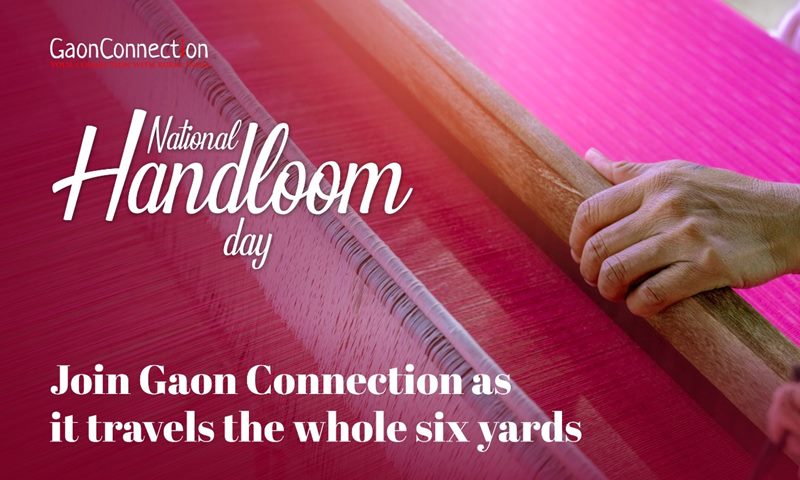
Indian Handlooms are some of the best and beautiful in the world. Pic: freepik.com
Every time I buy a sari, I ask a hundred questions. And each time I do, I am enchanted by the stories associated by that particular weave, or dye or printing technique. Somehow, it makes it extra special when I finally wear it.
That is the legacy of weaving and handlooms the country has handed over to each person who wears a sari. There are a thousand different kinds, some that are royalty, such as the Banarasis of Uttar Pradesh, the Kancheepuram of Tamil Nadu or the Balucheri of West Bengal, and others more obscure but not any less beautiful for it, like the Patteda Anchu, Lakundi or the Gomi Teni of Karnataka.
Bordering on the divine
The Gomi Teni is a rough textured, hard working, peasant sari with a detail in the border that is inspired by the jowar (sorghum) stalk. Jowar is considered auspicious and the bringer of good luck, growth and wealth and the Gomi Teni is therefore traditionally gifted to an expectant mother.
This was told to me by Hemalatha Jain of Punarjeevana, her Bengaluru-based Trust that works on reviving forgotten, on-the-brink-of-disappearing, weaves. She researched the Patteda Anchu sari, and her journey is nothing short of a treasure hunt.
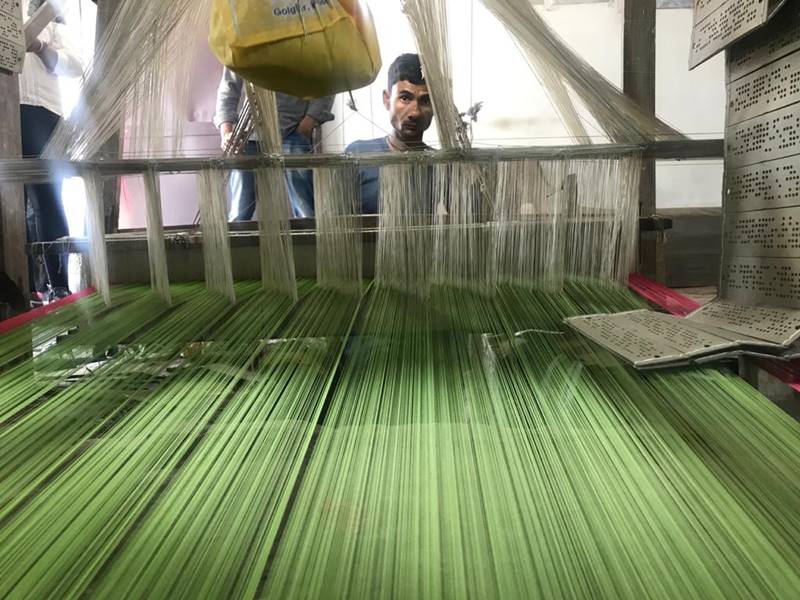
She searched in vain for at least one sample of the Patteda Anchu that she could then get woven again. Her investigation finally led her to an 80-year-old lady who was a Devadasi at Yellamma Saundatti temple in the district of Belgaum in Karnataka. Jain had to take photographs of the sari as the lady would not let it out of her sight! It is a thick sari with borders on either side, and can be worn both ways.
Now, Jain is working on a sari associated with another temple in the village of Godachi, also in Belgaum district. “The sari is called Gajju and its weavers are inspired by the Veerabhadra Temple. There is mention of the Gajju sari in 15th century historical documents. They were usually worn by women from the priest community,” Jain told Gaon Connection.

The Gajju, in beautiful earthy colours, has a tiny temple border and some colourful lines that are said to represent a human being’s spiritual goals. The saris are woven mostly by women.
Also Read: Weavers of Shantipur in West Bengal wrapped up in gloom
No conversation on saris can be complete without West Bengal, be it their resplendent Balucheri (There are barely a handful of weavers of this beauty still left in the village) woven with scenes from the epics, Ramayana and Mahabharatha, or even the more middle-class taant (handloom) saris broadly classified as Bengal Handlooms.
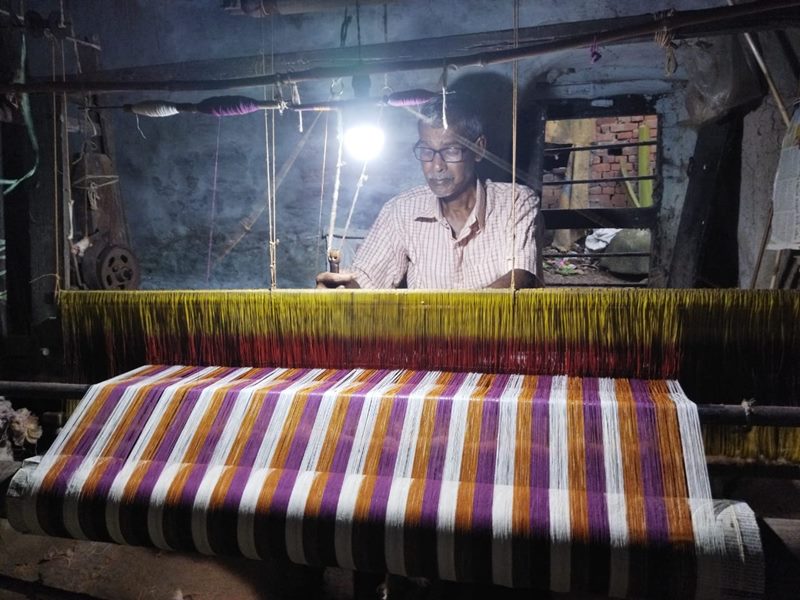
Handloom weavers hit by the pandemic
In pre-COVID times, Arup Rakshit, and his wife Rubi Rakshit, handloom activists based in Kolkata, West Bengal, travelled from place to place, across the country, talking to school and college students and anyone else who would listen about handlooms.
Today Rakshit is deeply despondent. “The pandemic has ensured that at least fifty per cent of the weavers in West Bengal have left weaving. They will not be returning to their looms,” he told Gaon Connection. “They are driving autos, selling fish and struggling to stay afloat,” he added.
Rakshit insisted there has to be a complete shift in the approach to handloom and its weavers. “Pay attention to them, acknowledge they are artists. At least ensure they have clean water and a square meal a day,” he said.
Also Read: A village that thrived on handloom, Cooch Behar’s Baburhat now has only one handloom mill
“All the online posting we are doing of glossy photographs of saris and textiles; they may sell a few pieces, but in no way are they translating into any help for the poor weaver. I feel we as a nation have failed them,” he said, with emotion.
In the pandemic, online sales have helped some handloom weavers. In Pollachi, Tamil Nadu, Vijayalakshmi Nachiyar of Ethicus said she was grateful for the online sales during the pandemic. “It kept us afloat. We could pay our weavers and artisans only because of the sales we had online,” she said.
The 50-year-old Nachiyar heads India’s first organic and farm to fashion sustainable brand. Ethicus makes the most beautiful saris of organic cotton and works with crafts people from across the country to do so.
“At the moment we have twenty weavers working with us. Of course, we work with hundreds of artisans, without whom there would be no Ethicus sari,” she told Gaon Connection. Each sari from Ethicus carries a tag with information about the name of the weaver, his or her photograph, and details of how long it took to weave.
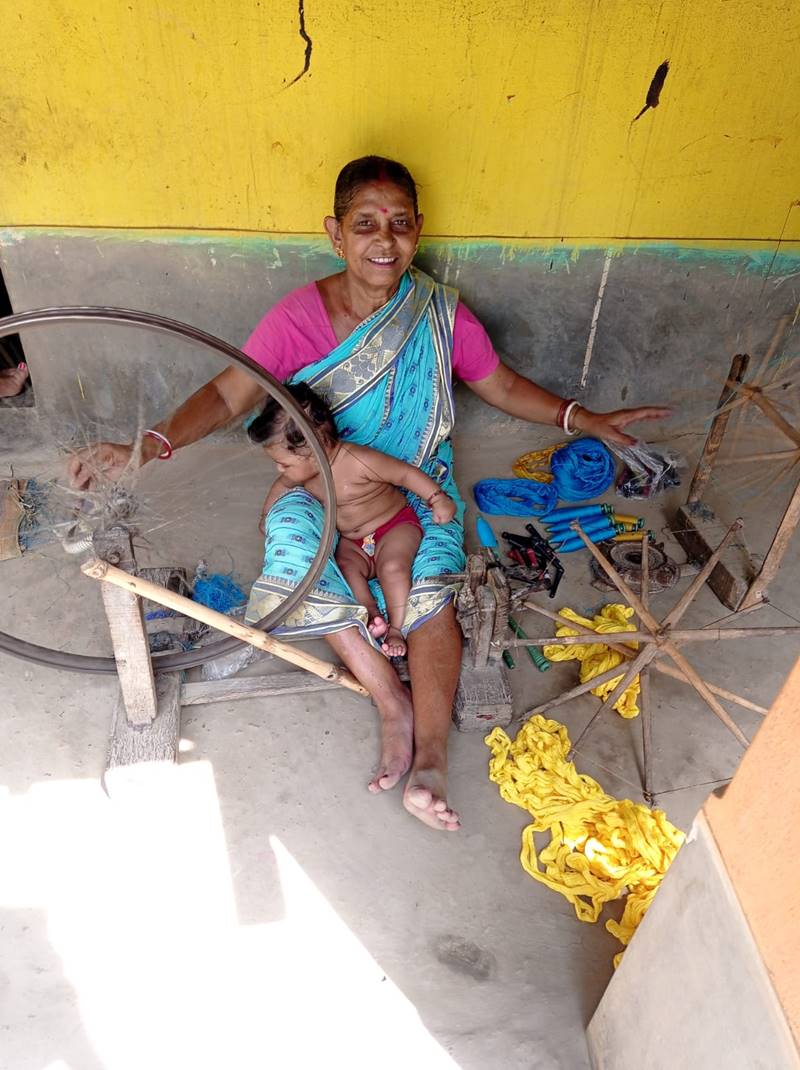
Glimmer of hope for Indian handloom
But there is still hope. Arup Rakshit told Gaon Connection that markets abroad were looking at Indian handlooms as sustainable and eco-friendly alternatives to synthetics.
A number of urban entrepreneurs are working with rural weavers with a focus on sustainability. Forty-one-year old Sonica Sarna, a Delhi-based designer, runs an outfit that manages the end to end business of international fashion brands that work with Indian textiles and artisans.
“I am from the dirtiest sector of textiles, the export business,” Sarna laughed. “But we have an ethical approach to fashion and design, and we help brands and designers build sustainability into the DNA of their design philosophy,” Sarna told Gaon Connection.
“We work with a lot of artisans in the handloom sector, be they dyers, printers, weavers, spinners, and we ensure they know their rights. We tell them about safe working conditions, fair wages and how not to be exploited,” she added.
Also Read: These weavers of Jammu want to revive the culture of age-old textile art
Sally Holkar, who established a charitable trust called Women Weave in Maheshwar in Madhya Pradesh in 2002, is hopeful too. “I hope that handloom rebounds quickly. It is going to take all of us working hard to assure that it happens,” she told Gaon Connection.
The vision of Holkar’s trust is to ensure weaving became a profitable, sustainable and dignified source of livelihood, especially for the women in Maheshwar, so that they can ensure health for themselves and their families, education for their children and be empowered.
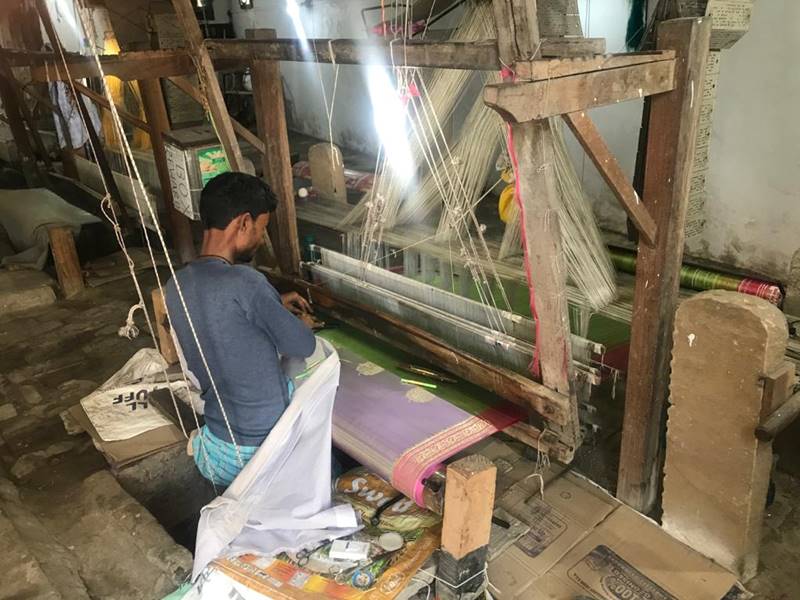
Epilogue
It is difficult to write a short piece on handlooms. Tomes have been written on them. The exquisite Bomkai, Sambalpuri, Kotpad… from Odisha, the Paithani from Maharashtra, the Chanderis and Maheshwaris from Madhya Pradesh, the Gadwal, Venkatagiri, Mangalagiri from Andhra Pradesh and Telangana…
Also Read: Bringing the desi back into cotton
Thousands of weavers, most of them wretchedly poor and exploited, work day and night, in order to drape us. It will not be long before they throw up their hands and look for other livelihoods. It is already happening.
Handloom lovers across the country irrespective of whether they work with handlooms to create saris and garments or just wear them, are of the opinion that there has to be an acknowledgement of the weavers. Measures should be taken that enables them to live a life of dignity and wellness, not pitiful poverty.
It is the weaver who works the loom day after day to incorporate history, lore, tradition and culture into the whole six yards. Only when we acknowledge that, will National Handloom Day hold any significance.


